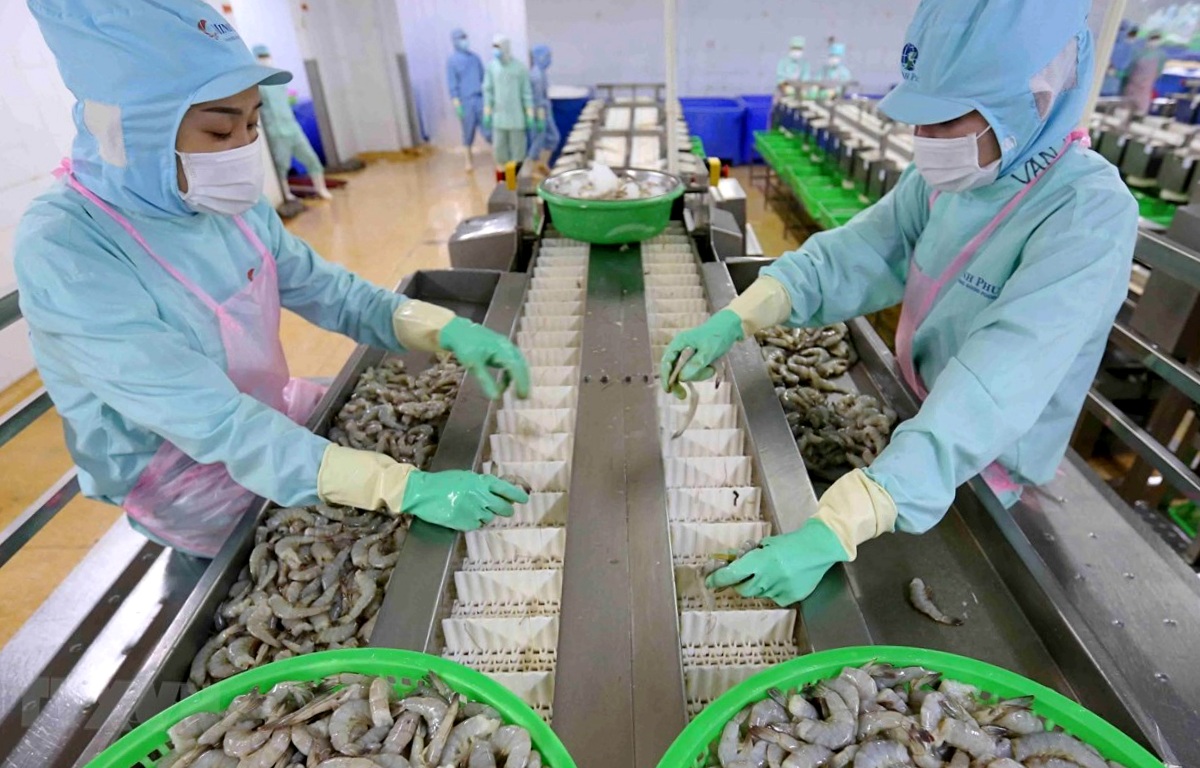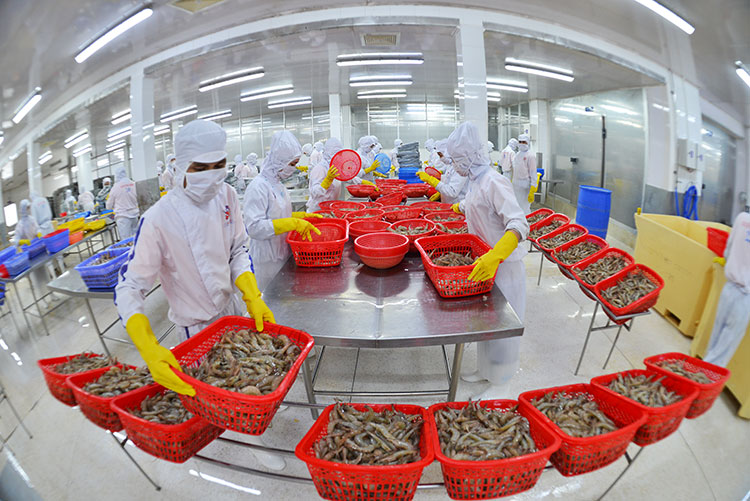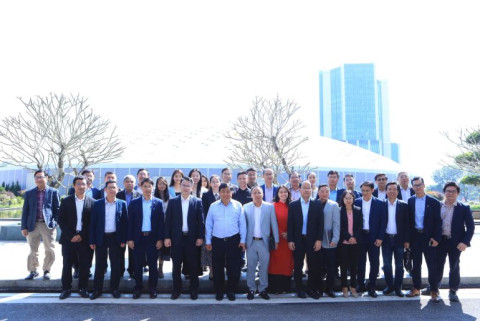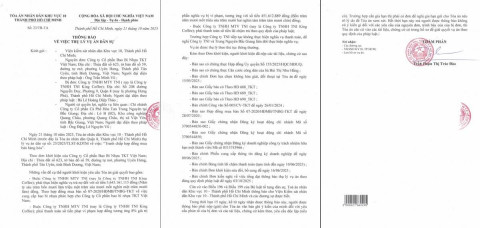Vietnamese businesses dominate market share in Japan
- 140
- Business
- 22:37 13/03/2024
DNHN - Value-added processed shrimp products account for approximately 40-45% of Vietnam’s total annual shrimp export value. Vietnamese businesses have high processing capabilities and lead the high-end shrimp market in Japan.
According to data from the General Department of Vietnam Customs, in January 2024, Vietnam’s shrimp exports to Japan reached over USD 37 million, an increase of 30% compared to the same period in 2023. During this month, Japan became Vietnam’s third-largest shrimp export market (after the US, China & Hong Kong), accounting for 15.4% of the value.
According to information from the Vietnam Association of Seafood Processors and Exporters (VASEP), the three largest Vietnamese businesses exporting shrimp to Japan in the first month of 2024 were Sao Ta (accounting for 13.8% of the value), Minh Phu Seafood (9.1%) and Minh Phu - Hau Giang (7.2%).

Sao Ta focuses on products such as breaded shrimp, straightened shrimp, fried shrimp, sushi shrimp, etc. Meanwhile, Minh Phu focuses on products such as fresh frozen headless tiger shrimp, breaded white-leg shrimp, steamed tiger shrimp, Nobashi tiger shrimp, PD white-leg shrimp, Ebifry white-leg shrimp, sushi shrimp, Ebishin shrimp, and tempura tiger shrimp in the Japanese market.
In 2023, Vietnam’s shrimp exports to Japan declined due to reduced consumer demand, rising inflation, and the depreciation of the Yen currency. However, this trend showed signs of recovery in late 2023.

According to Japan Customs, in 2023, Japan’s shrimp imports fell sharply, with a 9.4% decrease in volume, reaching 212,400 tonnes. The average import price of Japanese shrimp in 2023 was USD 9.6/kg, a decrease of 1.4% compared to 2022.
The Japanese market is assessed as having potential and is expected to recover sooner than other major markets such as the US and EU in 2024. Japanese consumers have high demands for products, requiring them to be delicious, nutritious, visually appealing, and meticulously processed. This market also has the advantage of being geographically closer and having more secure payment methods.
Currently, value-added processed shrimp products account for approximately 40-45% of Vietnam’s total annual shrimp export value. Vietnamese businesses have high processing capabilities and lead the high-end shrimp market in Japan.
P.V
Related news
- Connecting Leaders, Shaping the Future: Strategic Leadership Planning Meeting – CorporateConnections Hanoi A
- Sunlight - Unilever Vietnam Recognized for Outstanding Contributions to the National Initiative Supporting Women Entrepreneurs
- Deputy Prime Minister Nguyễn Chí Dũng: “The country’s major challenges weigh heavily on my mind — and we must resolve them together.
- Unitsky String Technologies signs cooperation agreements with three Vietnamese partners, opening a new direction for smart mobility and sustainable development
- When artists do business – livelihood is no poetry!
- Before the D‑day to abolish flat‑rate tax: Fear of technology and costs leave small traders struggling to adapt
- Vietnamese enterprises at a crossroads: the impact of a potential US–China deal
- "Digital technicians" must not be forgotten if Vietnam aims to meet its strategic goals
- HDBank: Impressive profit growth, leading in profitability and advancing international integration
- TNI King Coffee sued for over VND 5 Billion in unpaid debts
- VINASME and Jeonnam Technopark Sign MOU on technology cooperation, human resource training, and trade promotion
- Vietnamese entrepreneurs strengthen ASEAN connectivity in the digital iIntegration era
- Prime Minister: Vietnam aims to become a regional logistics hub
- Vietnam upgraded to Secondary Emerging Market by FTSE Russell
- Hanoi’s economy grows 7.92% in first nine months of 2025, FDI surges nearly threefold
- Vietnam’s strong gdp growth fails to ease labor market distress
- US tariffs on Brazil propel Vietnam’s pangasius into global spotlight
- VietLeap AI Accelerator launches: A strategic springboard for Vietnam’s AI startups
- CICON expands strategic alliances: A new step forward in Vietnam–Korea business connectivity
- What must Vietnamese enterprises do to maintain their position in the global supply chain?
Đọc thêm Business
Connecting Leaders, Shaping the Future: Strategic Leadership Planning Meeting – CorporateConnections Hanoi A
"Your network is your most powerful flowing asset. It generates value, multiplies opportunities, and accelerates your influence across borders."
Innovative ESG enterprise: Trạm Xe Việt startup proposes solutions to build a green mobility ecosystem
As Vietnam commits to achieving Net Zero by 2050 and tightens emissions standards, the transportation sector faces unprecedented pressure to transform.
Deputy Prime Minister Nguyễn Chí Dũng: “The country’s major challenges weigh heavily on my mind — and we must resolve them together.
On the morning of November 26, 2025, Deputy Prime Minister Nguyễn Chí Dũng chaired a high-level working session at the National Innovation Center (NIC) in Hòa Lạc.
Unitsky String Technologies signs cooperation agreements with three Vietnamese partners, opening a new direction for smart mobility and sustainable development
The signing ceremony took place in Minsk, Belarus, on November 28, 2025.
Before the D‑day to abolish flat‑rate tax: Fear of technology and costs leave small traders struggling to adapt
From 1 January 2026 the flat‑rate tax regime will be abolished. Small business households will be required to declare tax based on actual revenue. MISA supports the transition with technology to help micro‑merchants adapt smoothly and transparently.
Vietnamese enterprises at a crossroads: the impact of a potential US–China deal
As the world closely monitors every shift in US-China relations, emerging signals of a strategic agreement between the two global powers are raising hopes for global economic stability.
HDBank: Impressive profit growth, leading in profitability and advancing international integration
Ho Chi Minh City Development Joint Stock Commercial Bank (HDBank, stock code HDB) announced its consolidated profit before tax for the first 9 months of 2025 reached VND 14,803 billion, marking a 17% increase year-on-year (YoY).
TNI King Coffee sued for over VND 5 Billion in unpaid debts
On October 21, 2025, the People’s Court of District 10 in Ho Chi Minh City officially accepted a civil lawsuit concerning a commercial contract dispute between TKT Vietnam Plastic Packaging Joint Stock Company and TNI King Coffee Co., Ltd.
VINASME and Jeonnam Technopark Sign MOU on technology cooperation, human resource training, and trade promotion
On October 15, 2025, in Hanoi, VINASME and Jeonnam Technopark (Korea) signed an MOU to promote trade, advance technology transfer, and develop human resources between enterprises of both nations.
Vietnamese entrepreneurs strengthen ASEAN connectivity in the digital iIntegration era
On the occasion of Vietnam Entrepreneurs’ Day (October 13), an international event themed “Integration – Innovation – Sustainable Development” was solemnly held in Ho Chi Minh City.











